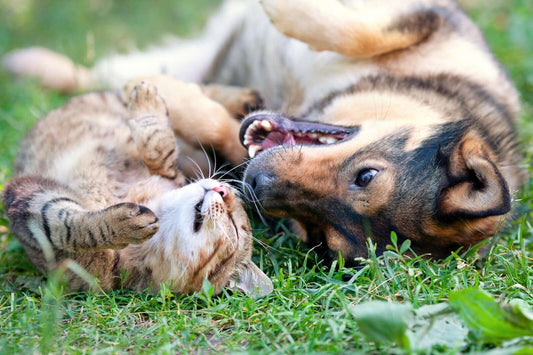When your pet gets sick or injured and find yourself unprepared, it could turn out to be a very stressful situation. And knowing how energetic pets can be, especially dogs, they’re bound to get into scrapes and injure themselves. For situations like these that don’t exactly call for a vet it's important to learn some basic first aid tips to help your pet.
Here are some common emergencies and first aid tips to keep in mind.
Broken bones and fractures are some of the most dangerous emergencies for your pets and it’s important to know what to do before, during and after an injury has occurred. If your pet has got a fracture look for
-
obvious signs of pain
-
limping and discomfort
-
swelling
-
limbs at awkward angle
Put a muzzle on your dog first. If you don’t have an actual muzzle simply use a scarf or a towel. Even the gentlest dog can snap and bite when in pain. If there’s an open wound or scrapes, gently wash it with warm water and put a temporary bandage. Keep them warm in a blanket, give them water to drink, and get them to be as comfortable as possible. Stabilize your pet and then it’s best to rush to the vet right away for immediate evaluation and treatment.
Lacerations and grazes
Abrasions, cuts, and grazes need to be cleaned immediately with warm salt water or some disinfectant to avoid bacterial infection. Gently remove any trapped debris or dirt. Wrap the wound in gauze or a bandage. If there’s mild bleeding apply moderate pressure and it should stop when you finish dressing it. Make sure to keep the wound clean and dry and change the dressing once or twice every day until it’s healed. Stop your pet from licking the wound and protect the area with socks if possible.
If bleeding persists or there’s significant swelling it’s best to take them to the vet for further assessment.
Heat stroke
A heat stroke can happen if your pet was outside for long hours during a hot summer day or in a car with no air-conditioning.
If your pet is showing more serious symptoms like loss of consciousness, vomiting, diarrhea, and other signs of discomfort do call the vet right away.
Poisoning
-
lethargy
-
vomiting
-
diarrhea
-
trouble breathing
-
agitation
Try to trace the item your pet has licked or swallowed. It could be a plant they encountered on a walk or items lying around the house. Collect as many details as possible about the situation to give a description to the vet. Never induce vomiting unless the vet specifically advises you to do so.
Burning
Pets can easily get burnt by hot water, electric current, fire, and chemicals. Pets are liable to fall prey to kettle spills in the kitchen, steam from cooking equipment, or when they chew on electrical wires. If it’s a minor burn you can easily treat it at home with some quick first aid. Cool down the area with some water or apply a cold compress for a few minutes. Do not apply any creams until you check in with the vet.
Severe burns will show themselves in the skin peeling away and if the burns cover large areas of their body your pet could go into shock. Keep your pet warm with a blanket and call your vet for first steps before taking them to the clinic.
In case of an emergency, you can also consult with an online pet doctor who can provide guidance on how to care for your pet's burns until you can get them to a clinic. Online pet doctors are a convenient option for pet owners who may not have easy access to a local veterinarian or may not be able to visit a clinic in person.
They can assess your pet's condition and provide instructions on how to provide immediate care. However, it is important to note that online consultations should not replace regular visits to a veterinary clinic for routine check-ups and vaccinations. Online pet doctors are a useful resource in times of emergency but it is always advisable to have a regular veterinarian who can provide comprehensive care for your pet's long-term health.
Conclusion












